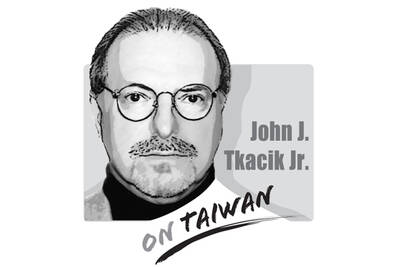The Sydney Morning Herald yesterday reported that Indonesia and Australia are cooperating at the highest levels in preparation for “mega-disasters” with a view to developing policies of preventive action and response.
This is splendid news, and a welcome sign of cooperation in a region frequently beset by diplomatic tension and suspicion.
These inevitable catastrophes will affect not only the country or countries where they occur, but also entire regions and the interconnected economies they sustain.
One of the report’s authors warned that population growth and denser habitation of fragile areas — which would have been avoided or sparsely populated in previous centuries — mean that natural disasters could wreak terrible losses.
Among the most vulnerable locations were said to be “mega-cities in the Himalayan belt, China, Indonesia and the Philippines [which are] prime candidates for earthquakes that could cause more than a million deaths.”
This research suggests that the greater the magnitude of a natural disaster, the greater the damage that can be felt by neighboring countries as “interaction of climate change, urbanisation, poor land use planning and tension about access to resources” heightens humanitarian crises.
A disaster at a time of economic crisis would result in even worse consequences, heightening social unrest in affected areas as victims struggle to recover and neighbors hesitate to donate from shrinking bank accounts.
Taiwan is one of the world’s most seismically active countries, but more rigorous building codes mean that the most severe of earthquakes and typhoons take far fewer lives than events of similar magnitude in countries like Pakistan, China, Myanmar and Bangladesh.
Though this sense of security has the tendency to promote parochialism, Taiwanese should not ignore the warning signs of growing social, economic and environmental tensions in neighboring states — and need to be better informed at civic and government policy levels to establish and monitor risk. The Philippines is a case in point, though China is slowly moving in a direction that suggests economic growth will not be able to stave off widespread social upheaval and conflict.
In China’s case, this week’s news that a rigged court denied compensation and accountability to parents of children who died in poorly built classrooms during the Sichuan earthquake suggests that the country has a long way to go before it can reach some level of sobriety on such long-term challenges.
The good news is that Taiwan has the potential to play a very positive role in helping China to take a step toward peaceful and constructive integration with its neighbors. At the moment, this is being simplistically interpreted as a chance for some to get rich as the Chinese market expands and for Taiwan to deny its constructive characteristics in the process.
The longer view, however, suggests that wealth is a regional, if not global, issue, and that if China persists in being a social, political and environmental weak link, then it will end up dragging everyone down with it.
In the end, with natural disasters, as with economic fidelity, we are all in it together.

On May 7, 1971, Henry Kissinger planned his first, ultra-secret mission to China and pondered whether it would be better to meet his Chinese interlocutors “in Pakistan where the Pakistanis would tape the meeting — or in China where the Chinese would do the taping.” After a flicker of thought, he decided to have the Chinese do all the tape recording, translating and transcribing. Fortuitously, historians have several thousand pages of verbatim texts of Dr. Kissinger’s negotiations with his Chinese counterparts. Paradoxically, behind the scenes, Chinese stenographers prepared verbatim English language typescripts faster than they could translate and type them
More than 30 years ago when I immigrated to the US, applied for citizenship and took the 100-question civics test, the one part of the naturalization process that left the deepest impression on me was one question on the N-400 form, which asked: “Have you ever been a member of, involved in or in any way associated with any communist or totalitarian party anywhere in the world?” Answering “yes” could lead to the rejection of your application. Some people might try their luck and lie, but if exposed, the consequences could be much worse — a person could be fined,
Xiaomi Corp founder Lei Jun (雷軍) on May 22 made a high-profile announcement, giving online viewers a sneak peek at the company’s first 3-nanometer mobile processor — the Xring O1 chip — and saying it is a breakthrough in China’s chip design history. Although Xiaomi might be capable of designing chips, it lacks the ability to manufacture them. No matter how beautifully planned the blueprints are, if they cannot be mass-produced, they are nothing more than drawings on paper. The truth is that China’s chipmaking efforts are still heavily reliant on the free world — particularly on Taiwan Semiconductor Manufacturing
Last week, Nvidia chief executive officer Jensen Huang (黃仁勳) unveiled the location of Nvidia’s new Taipei headquarters and announced plans to build the world’s first large-scale artificial intelligence (AI) supercomputer in Taiwan. In Taipei, Huang’s announcement was welcomed as a milestone for Taiwan’s tech industry. However, beneath the excitement lies a significant question: Can Taiwan’s electricity infrastructure, especially its renewable energy supply, keep up with growing demand from AI chipmaking? Despite its leadership in digital hardware, Taiwan lags behind in renewable energy adoption. Moreover, the electricity grid is already experiencing supply shortages. As Taiwan’s role in AI manufacturing expands, it is critical that